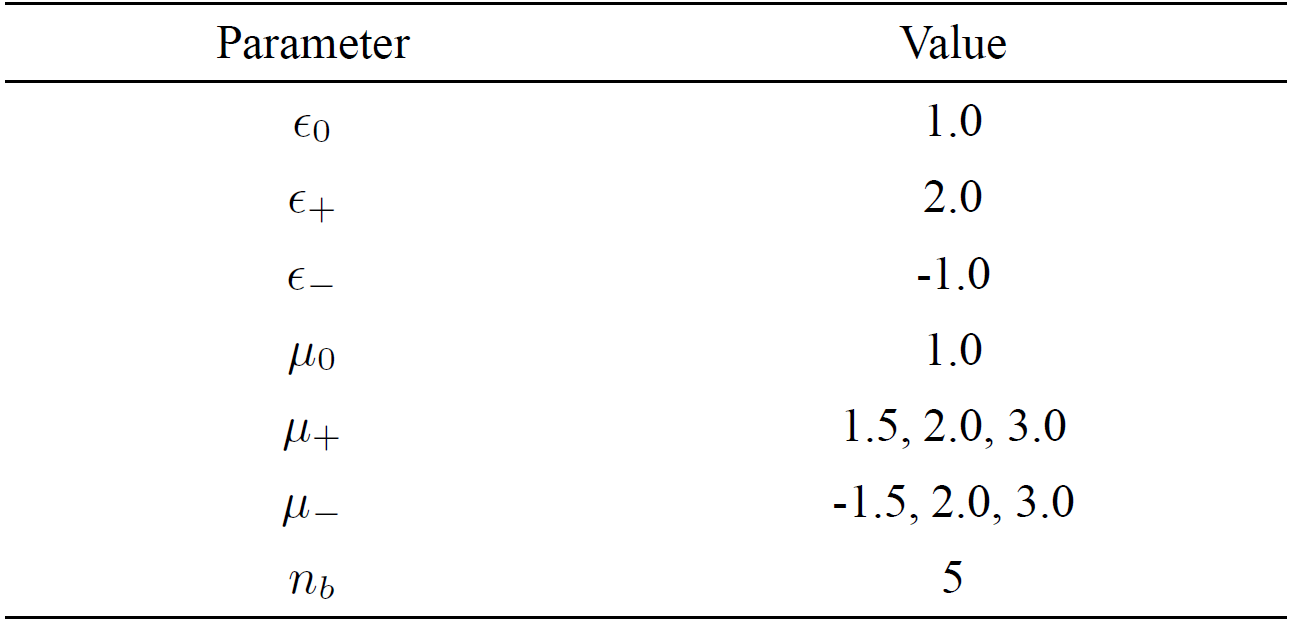PACS: 02.30.Hq; 11.30.Pb
1. Introduction
Studies of planar multilayer structures with alternating material and metamaterial layers are motivated by the known common feature of planar periodic systems to generate transparency bands. Some time ago, Banerjee et al1 calculated the intensity of the electromagnetic fields that propagate through an array of periodically alternating positive index media (PIM) and negative index media (NIM). However, they do not present their results in terms of either the angle of incidence or the frequency of the plane wave, which are the important parameters when one is interested in the directional and frequency selectivities of such structures. They display the field intensity along the direction of propagation and compare the transfer matrix method to the finite element method concluding that the transfer matrix method provides the same results as the latter. Their results motivated us to use the transfer matrix method with the main goal of studying the effect of both the angle of incidence and frequency of the propagating plane wave on the transmittance spectrum. We compute the values of the transmittance for different values of
2. The transfer matrix method
2.1. Waves at an interface
To develop the TMM we must first know how the electromagnetic waves behave at the interface between two dielectrics. For plane waves at an interface, the electric and magnetic fields are given by
respectively. The two media separated by the interface will be characterized by permittivities
Because the condition of continuity of the tangential components of both the electric and magnetic fields
must be satisfied for any point of the interface, the tangential components of
while the dispersion relation
If k x and k z are real, we can define the angles of incidence and refraction as
and
respectively. From Eq. (4), we can see that
and if we apply the dispersion relationship, we obtain
If we now take the ratio of the last two equations we obtain Snell’s law
Considering the case of the TE polarization (s-type polarization), then
and
We also have the boundary condition that says that the component of the electric field which is parallel to the interface is the same on both sides of the interfaces
which holds for the magnetic field
as well as.
Using Maxwell’s equation
in Eq. (15), we obtain
Inserting (17) in (15) leads to
Now we can write Equations (19) and (14) in matrix form
or
where the transfer matrix of the interface
is introduced.
By a similar procedure, we can obtain the transfer matrix for the case of the TM polarization (p-type polarization)
For materials with only real dielectric constants we can express the wave vectors as
so the transfer matrices for the TE and TM cases are written as
where
2.2. The transfer matrix for a slab
For a set of interfaces, the systems behaves as a slab (sandwich of media). A simple example is given in Fig. (2).
For such systems, it is enough to apply the composition law for transfer matrices 3. In this way, the relationship of the coefficients of entry and exit is given by
where
From the last equation, one can obtain the transfer matrix for the slab as
which can be used for the generalization to the multilayer case.
2.3. Wave propagation through a multilayered system
The next step is to consider a multilayered system as illustrated in Fig. (3).
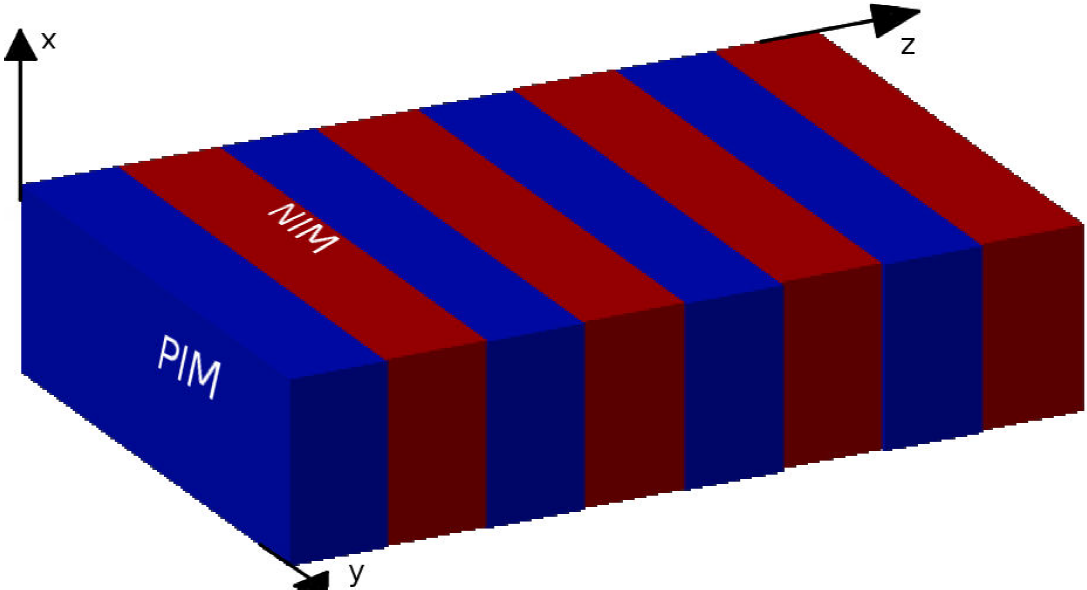
Figure 3. A system formed by two types of slabs. The first one is a PIM (blue) labeled as A in the text, and the second is a NIM (red) labeled as B in the text.
For a system of this class, the transfer matrix is obtained by applying the composition law again. In this way, we have an interface matrix M i,i+1 for every interface and a propagation matrix of the form
for every slab in which the electromagnetic wave propagates. In this manner, for a ten multilayer slab system (5 A and 5 B layers) the transfer matrix is written as
where M 0X is the interface matrix between air and medium X, P X is the propagation matrix of medium X, and M XY is the interface matrix between medium X and medium Y. The M and M XY matrices are transfer matrices for the s-polarization or the p-polarization, depending on the nature of the incident wave.
Once the transfer matrix for the multilayered system has been defined, one can proceed with the calculation of the transmission amplitude based on its definition for the case of electromagnetic waves given by 3
where det M stands for the determinant of M, and the transmittance as its square modulus
3. Numerical simulations
The computation of the transmittance is performed by using a simple python code 4. The system which we model has up to ten slabs, alternating a PIM with a NIM. The PIM is characterized by
3.1. The effect of the number of layers
We begin by analyzing the effect of the number of layers upon the transmission spectrum. With this task in mind, we vary the number of periods “AB” crossed by the propagating wave using the values of the parameters given in Table I, where the parameters
Table I. The values of the permeabilities and permittivities of the AB slabs used for the case of a variable number of blocks.
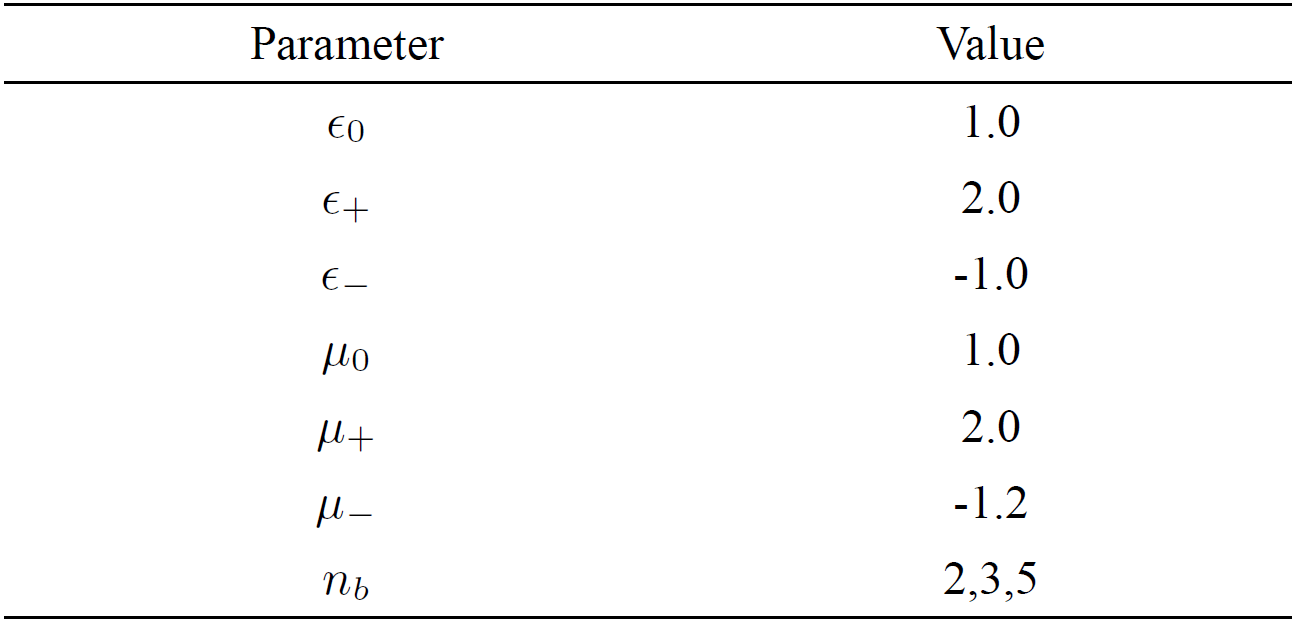
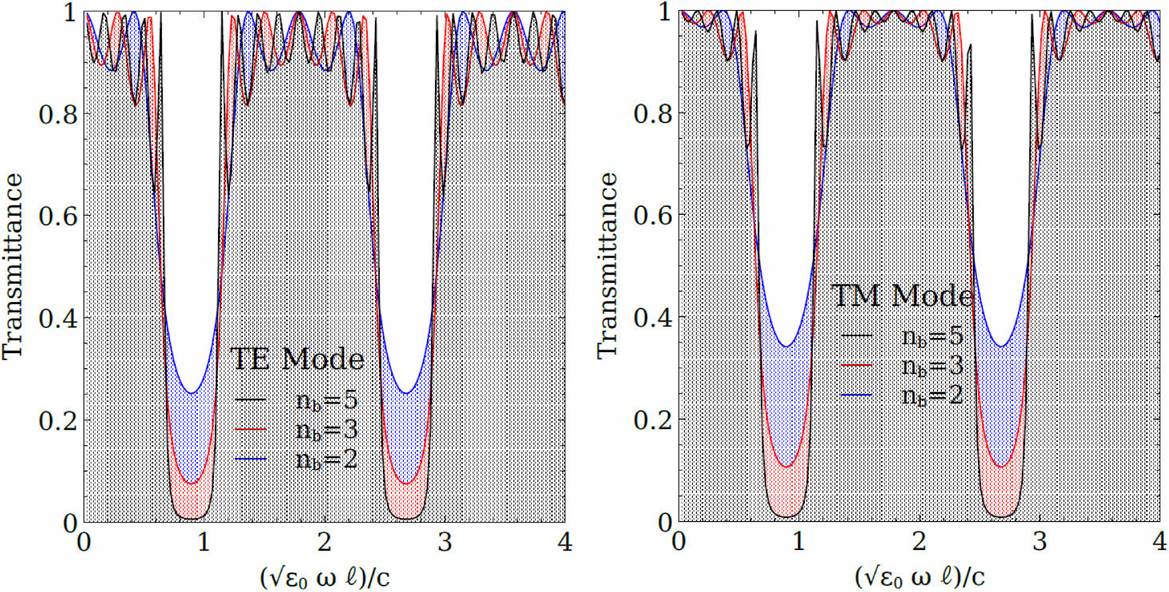
Figure 4. Plots corresponding to the case of variable number of blocks. Left panel: the TE mode. Right panel: the TM mode. In these graphs we can see that the valleys of the transmittance get deeper as we increase the number of blocks. This is congruent with the formation of transmission bands in the case of superlattices.
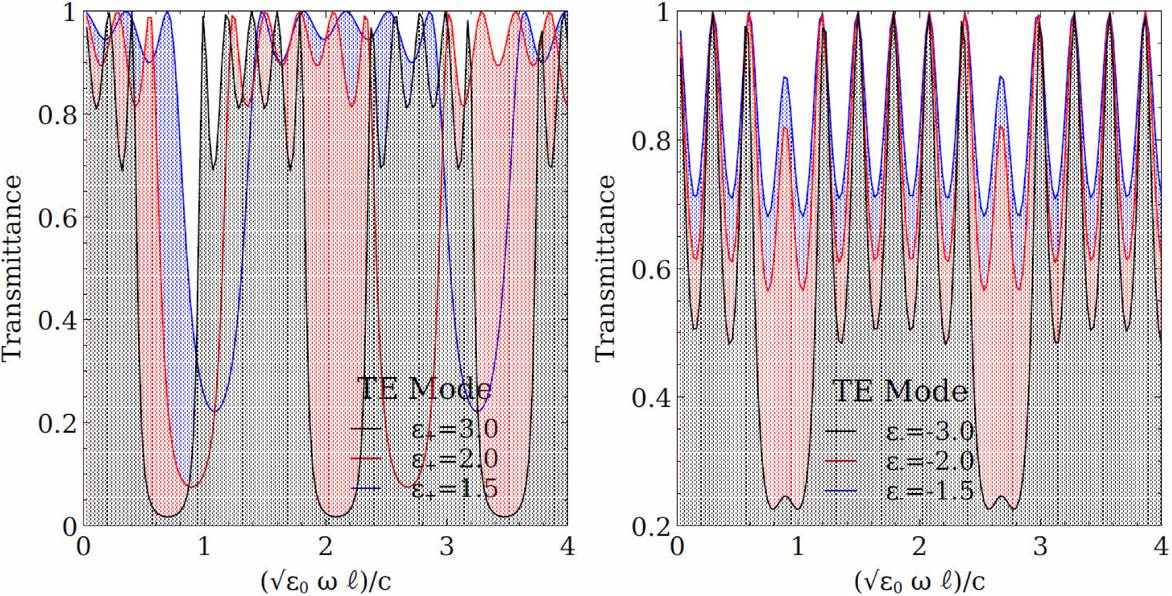
Figure 5. Plots corresponding to the case of fixed angle of incidence
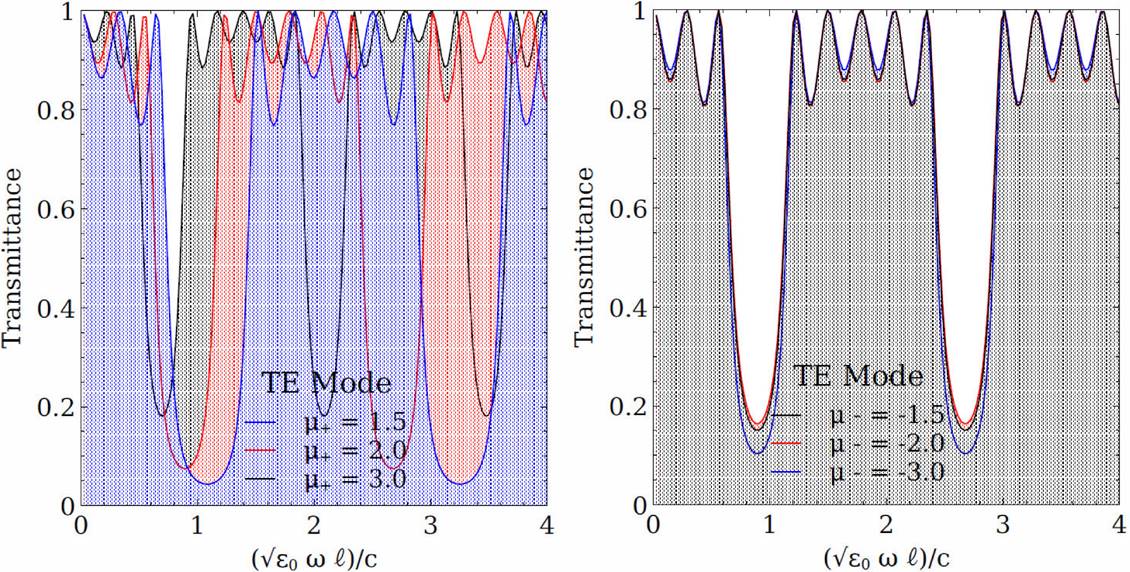
Figure 6. Plots corresponding to the case of fixed angle of incidence
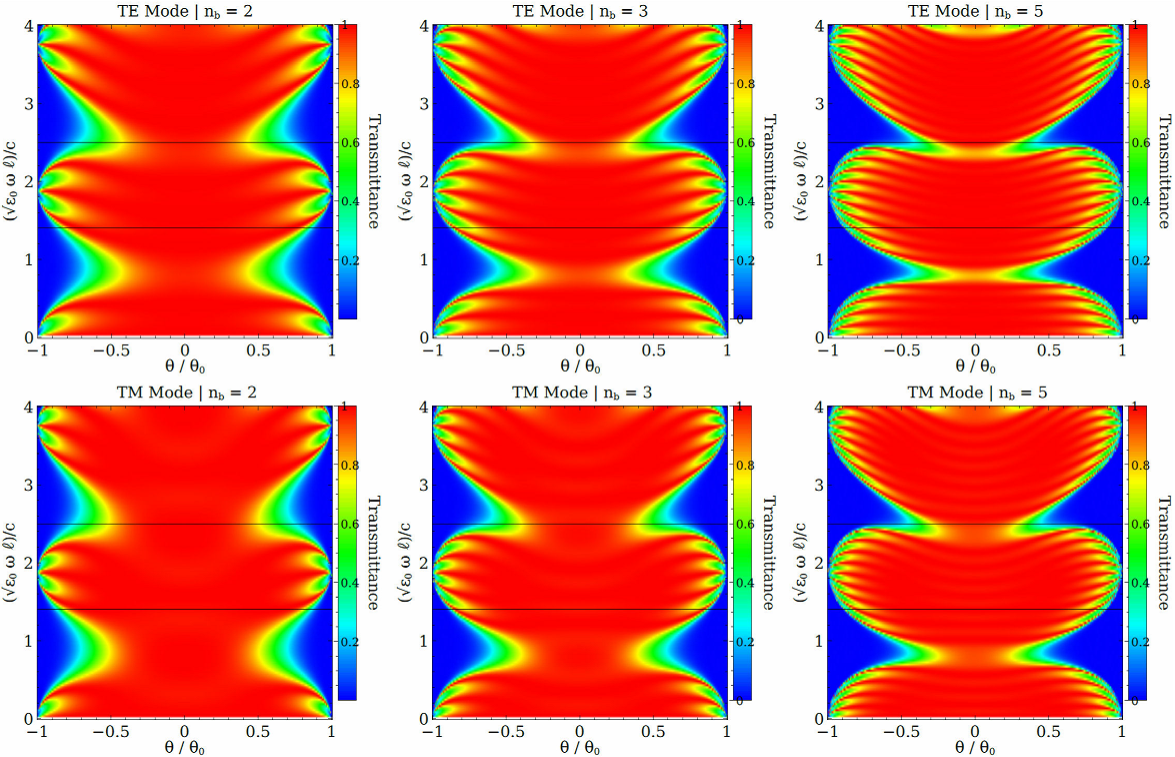
Figure 7. Contour plots. The top row correspond to the TE mode (s-polarization) while the bottom row correspond to the TM mode (p-polarization). The number of blocks takes the values n
b
= 2, 3, 5. The x-axis corresponds to the angle of incidence, the y-axis to the frequency of incidence in
3.2. The effect of
Knowing that the number of blocks generates a series of transmittance bands, one naturally may ask if there is a way to control the width of these bands by means of the electric permittivities of the slabs. The values of the parameters that we use for this computation are given in Table II.
Table II. The values of the permeability and permittivity used when the number of blocks is kept fixed.
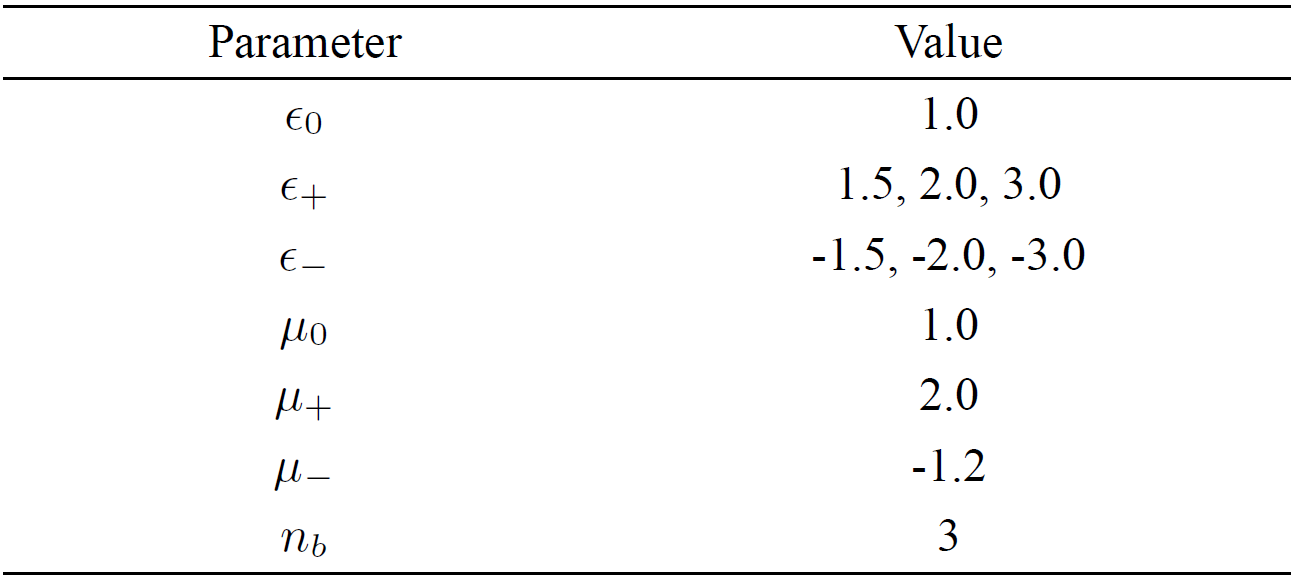
The results are presented in Fig. (8). We can see that the effect of increasing
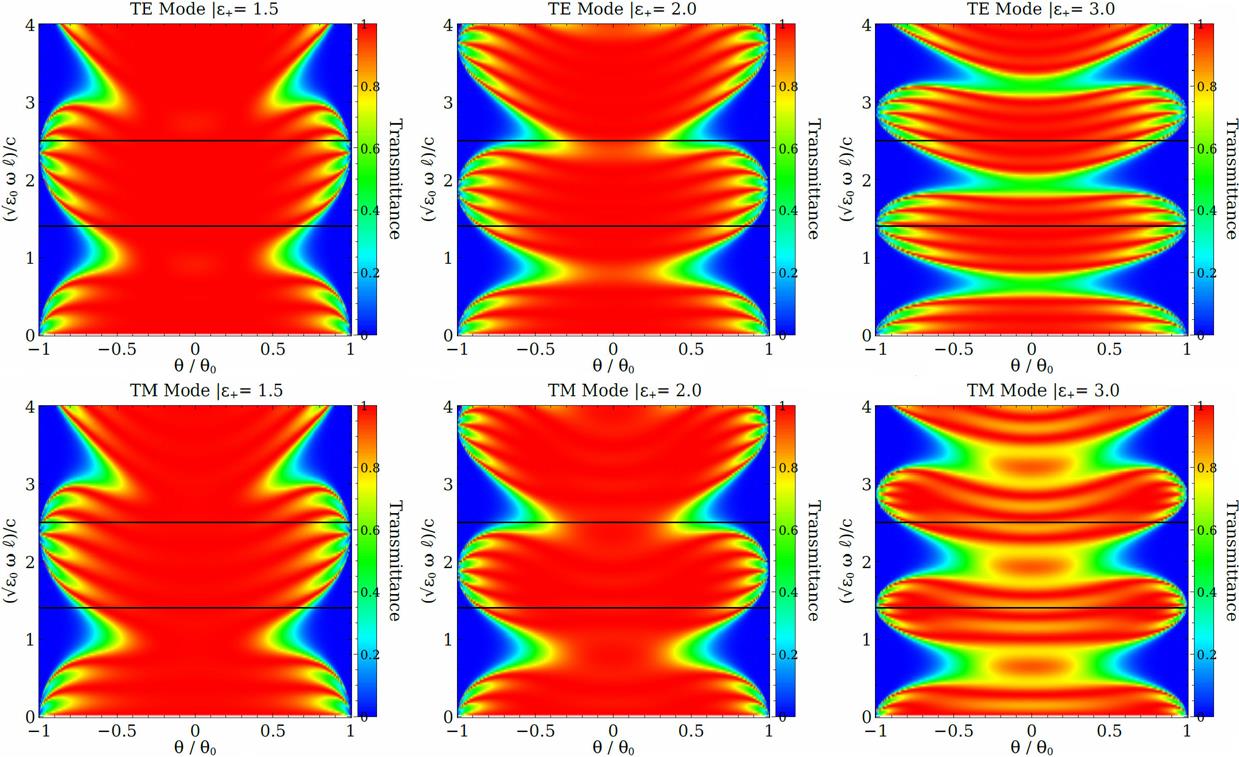
Figure 8. Contour plots. The top row correspond to the TE mode while the bottom row correspond to the TM mode. The positive permeability takes values
On the other hand, if we increase the value of
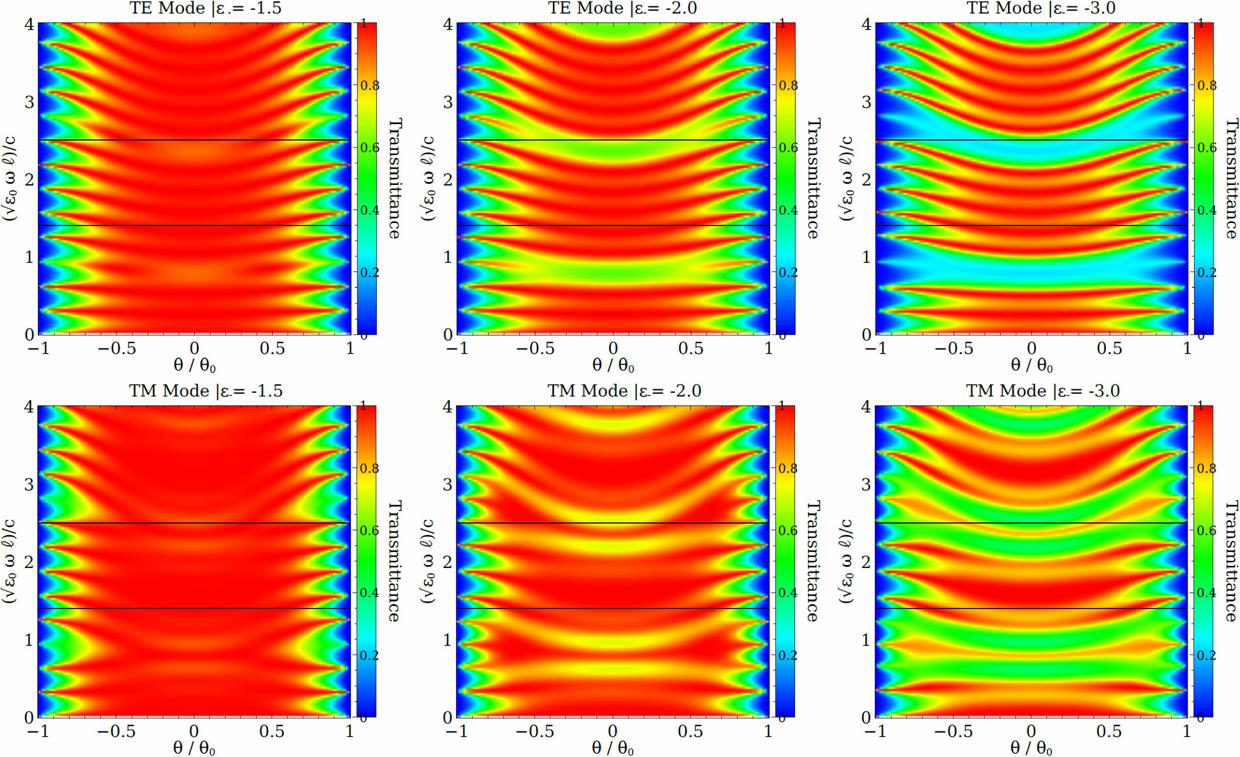
Figure 9. Contour plots. The top row correspond to the TE mode while the bottom row correspond to the TM mode. The positive permeability takes values
In general, we can say that the value of
3.3. The effect of
We move now to the study of the effects of increasing the values of the permeabilities of the system. For this task, we use the values from Table III for the parameters under control.
From Fig. (6), we see that if we increase the magnitude of
From the left panel of Fig. (11), we can appreciate easily a shifting effect to lower frequencies. Also, and even more interesting, we see that if we increase the value of
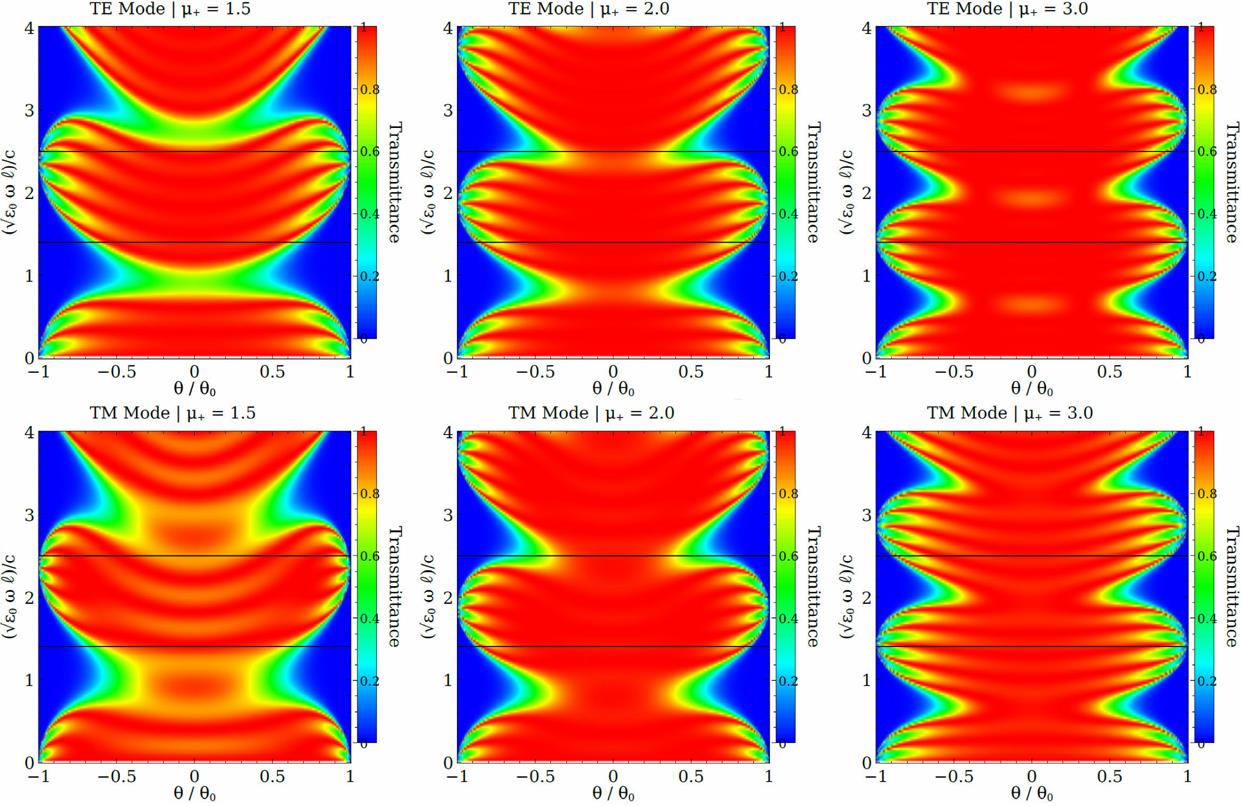
Figure 10. Contour plots. The top row correspond to the TE mode while the bottom row correspond to the TM mode.
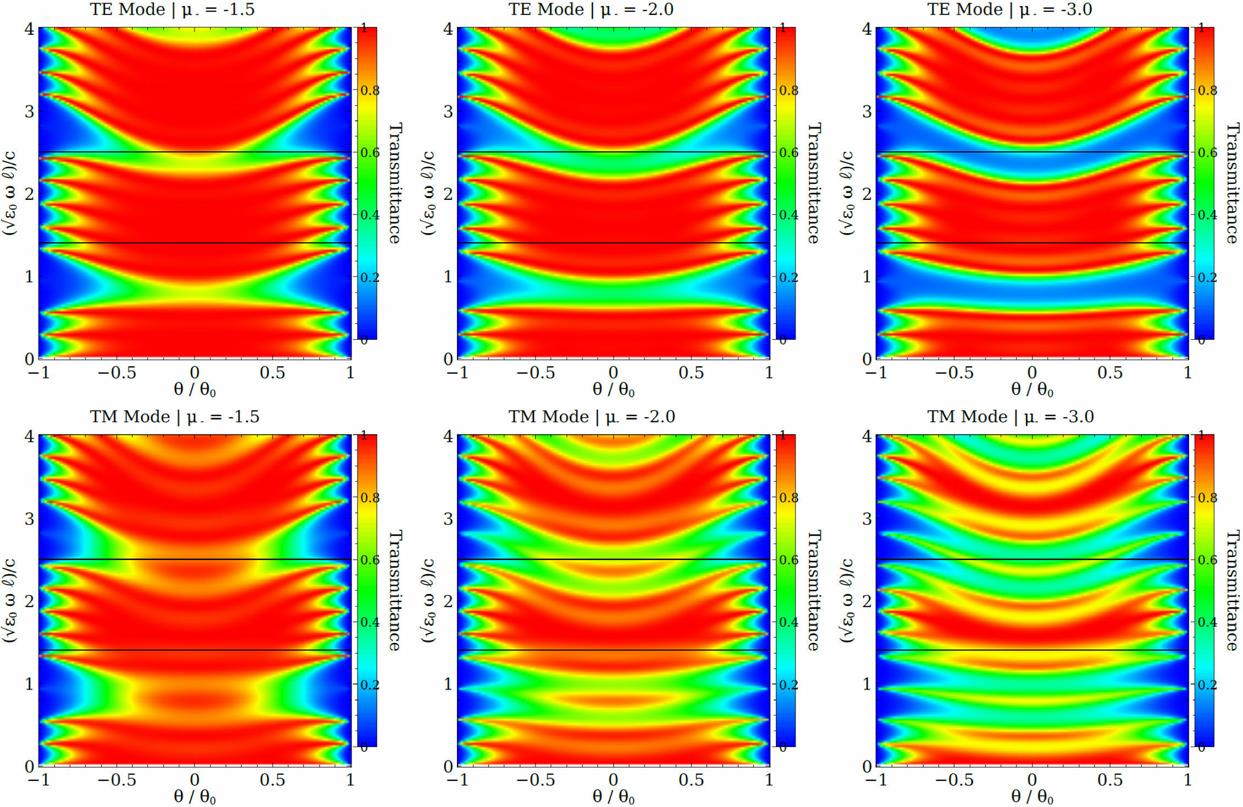
Figure 11. Contour plots. The top row correspond to the TE mode while the bottom row correspond to the TM mode.
In the case of increasing the values of
In addition, Figs. (7)-(11) show that the regions of high transmittance do not vary with the angle of incidence, which may be related to the independence of the polarization angle of the incident wave as also reported in 5. Considering that the reflectance and transmittance are complementary properties, our findings regarding the transmittance spectrum seem to be in agreement with those reported in 6 for an Ag-TiO2 multilayer system, which is the standard multilayer candidate with high transmittance in the visible region.
4. Conclusion
We have obtained the transmission properties of a multilayered structure of alternating positive index media and negative index media using the TMM. We have sought for profiles of high transmittance at any angle of incidence in the visible region of the spectrum. In this respect, our results suggest a system with the properties displayed in Fig. (7), i.e., with
In addition, we have studied the manner in which the permeability and permittivity parameters affect the transmission properties in an alternation of material and metamaterial. We have observed that positive permeabilities may have the effect of reversing the appearance of the transmission bands that one may see in multilayered structures. On the contrary, positive permittivities have the effect of making the transmittance bands more pronounced. Somewhat surprisingly, the negative values of the electromagnetic material parameters do not have relevant effects in these settings.
The results obtained in this paper are valid far from the absorption bands of the multilayer structure to avoid numerical instability problems which are known to occur when the absorption is included 7. However, the results we report for the visible region may still remain valid for some metamaterials, such as the hyperbolic ones, for which the absorption bands lie in the ultraviolet region 8.











 text new page (beta)
text new page (beta)



